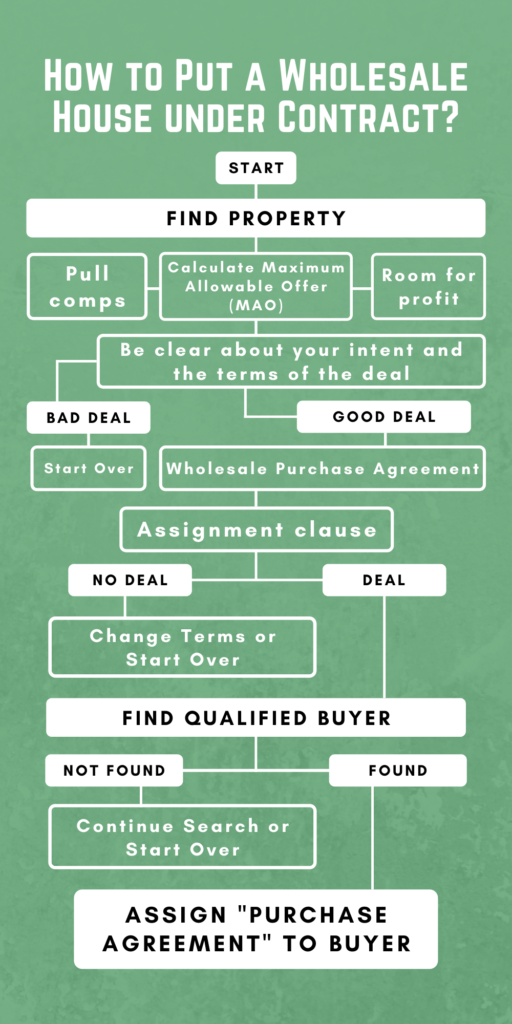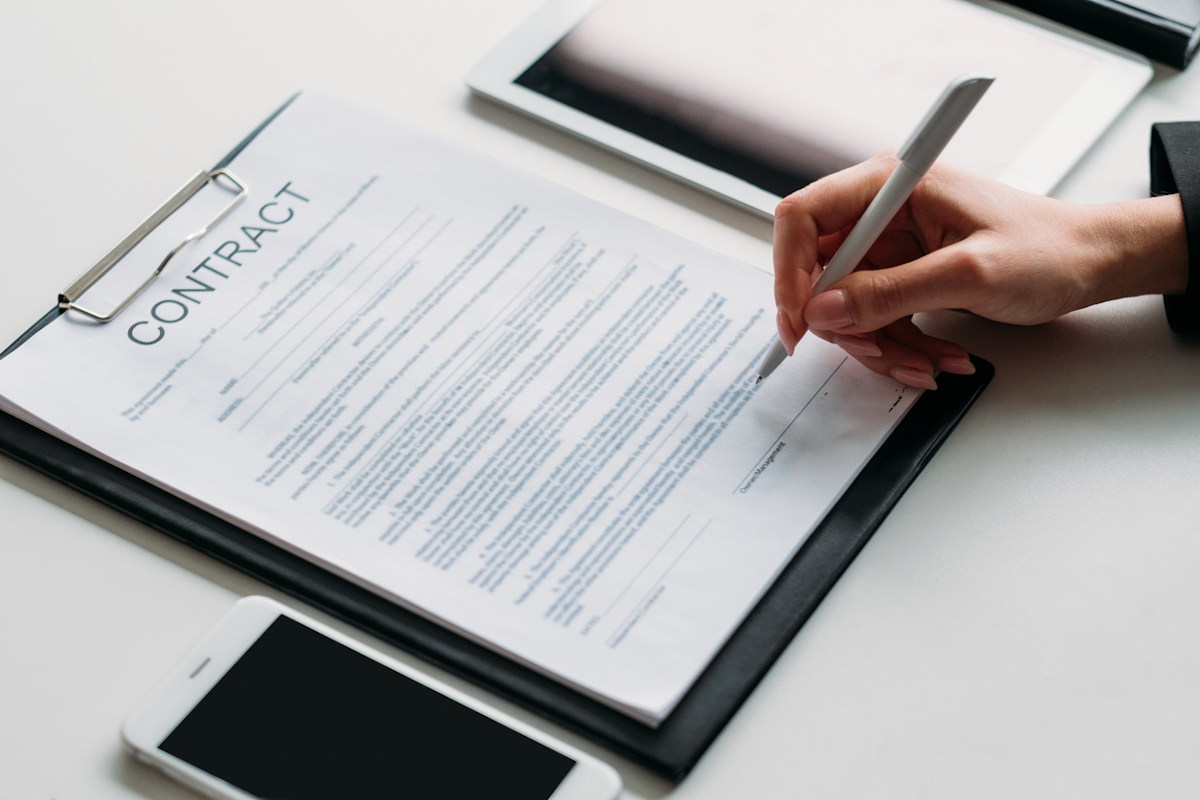When dealing with real estate wholesaling, the first part of the process is to draw up a contract. This contract is also known as a ‘Purchase Agreement’ and is made between a motivated seller and a wholesaler. It gives the wholesaler the right to have control over selling the property. It also lays out the essential terms and conditions that they must follow. In other words, it talks about finding a buyer for the property in a certain period before the expiration of the contract.
The wholesale purchase agreement is assigned for a specified fee. This fee is minimal, so you don’t have to worry about the cost. Also, the legal framework of a wholesale contract sets forth a variety of terms, which should be well-understood.
These include:
- Listing the parties involved
- Description of the real estate
- Denoting any personal property, included in the sale
- Complete details of the purchase price as well as financing options
- Confirmation of the physical condition of the property
- Stating the closing date/ deadline
- Deed type discussion
- Listing down state-specific adjustments like taxes, water, and sewage
- Stating the risk involved
- Marketable title
- Inspection contingencies
- Conditions of the premises
- Disclosures and addendums
Once the contract is signed between the seller and the wholesaler, the seller still remains the property owner. However, the wholesaler has the rights to sell the property.

Assignment of the Real Estate Purchase and Sale Agreement
The second part of the transaction is the contract assignment to a potential cash buyer. The assignment of the real estate purchase and sale agreement assigns contractual rights to the investor. The contractual document states that the new buyer will take on your responsibilities, including the property
purchase.
Before getting this contract signed by the cash buyer, you must inform them of the stipulations. Also, make sure that they are aware of the original contract layout, terms, conditions, and contingencies. The terms related to how the wholesaler will get paid are listed in the assignment of the real estate purchase
and sale agreement.
In general, the wholesaler is paid a deposit once the agreement is signed. However, the rest of the profit comes after the finalization of the transaction.
Now that you have a clear understanding of the contractual parts of the transaction, the process works as follows:
The owner of the property is in distress and motivated to sell it fast for cash. The wholesaler approaches the property owner with an offer. Together, both sides agree to put the property under contract for $120,000. Now using the network of investors and other sources to find and attract cash buyers, the wholesaler aims to close the deal quickly.
The wholesaler then finds a cash buyer who is willing to buy at $130,000. He or she then assigns the contract to the cash buyer. The buyer makes the payment and purchases the property. The agreed amount is then paid to the seller to close the transaction. The price difference between the money paid
by the buyer and agreed with the seller is the profit margin of the wholesaler. In this case, it will be $100,000.
Back to Wholesaling Houses | NEXT: Can You Wholesale Houses Using a Loan?

